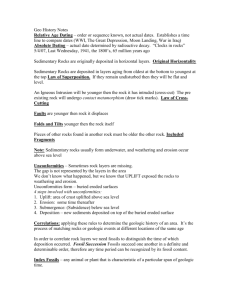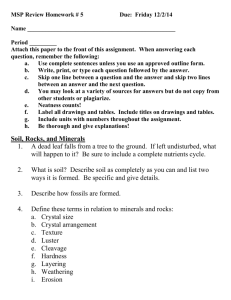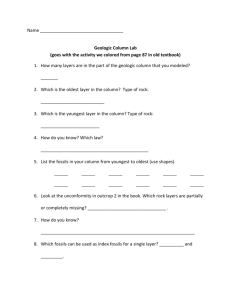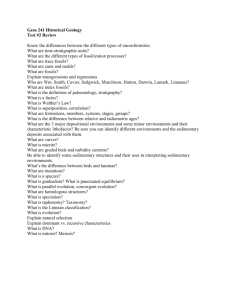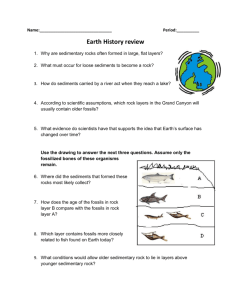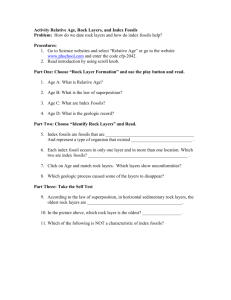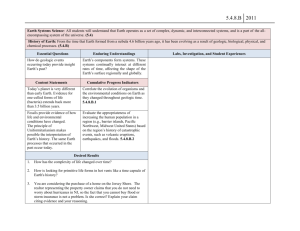Sample 5.3.B.2 Complete
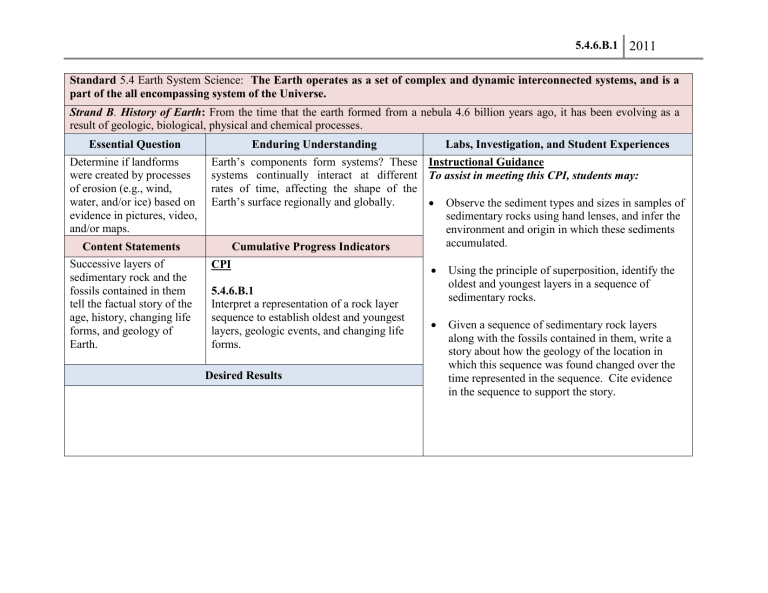
5.4.6.B.1
2011
Standard 5.4 Earth System Science: The Earth operates as a set of complex and dynamic interconnected systems, and is a part of the all encompassing system of the Universe.
Strand B. History of Earth: From the time that the earth formed from a nebula 4.6 billion years ago, it has been evolving as a result of geologic, biological, physical and chemical processes.
Essential Question
Determine if landforms were created by processes of erosion (e.g., wind, water, and/or ice) based on evidence in pictures, video, and/or maps.
Content Statements
Successive layers of sedimentary rock and the fossils contained in them tell the factual story of the age, history, changing life forms, and geology of
Earth.
Enduring Understanding
Earth’s components form systems? These systems continually interact at different rates of time, affecting the shape of the
Earth’s surface regionally and globally.
Cumulative Progress Indicators
CPI
5.4.6.B.1
Interpret a representation of a rock layer sequence to establish oldest and youngest layers, geologic events, and changing life forms.
Desired Results
Labs, Investigation, and Student Experiences
Instructional Guidance
To assist in meeting this CPI, students may:
Observe the sediment types and sizes in samples of sedimentary rocks using hand lenses, and infer the environment and origin in which these sediments accumulated.
Using the principle of superposition, identify the oldest and youngest layers in a sequence of sedimentary rocks.
Given a sequence of sedimentary rock layers along with the fossils contained in them, write a story about how the geology of the location in which this sequence was found changed over the time represented in the sequence. Cite evidence in the sequence to support the story.
Sample Assessments
To show evidence of meeting this CPI, students may answer the following questions:
1.
According to the picture below, which layer of sedimentary rock is the oldest?
A.
Layer 4
B.
Layer 3
C.
Layer 2
D.
Layer 1
(MI)
2.
An unusual type of fossil clam is found in rock layers high in the
Swiss Alps. The same type of fossil clam is also found in the Rocky
Mountains of North America. From this, scientists conclude that
A.
Glaciers carried the fossils up the mountains
B.
The Rocky Mountains and the Swiss Alps are both volcanic in origin
C.
Clams once lived in mountains, but have since evolved into seadwelling creatures
D.
The layers of rocks in which the fossils were found are from the same geologic age
(NAEP)
Resources
National Science Digital Library, Science Digital Literacy Maps
The Living Environment: Biological Evolution http://strandmaps.nsdl.org/?id=SMS-MAP-1430
NSDL Collection K-12 Short Cuts: Middle School
5.4.6.B.1
2011
5.4.6.B.1
2011

